everywhere but in the productivity statistics
description: a phrase describing the paradox where technological advancements seem ubiquitous but do not appear to be reflected in improved productivity metrics.
31 results

Surviving AI: The Promise and Peril of Artificial Intelligence
by
Calum Chace
Published 28 Jul 2015
It is true that economists have long struggled to record the productivity improvements that would be expected from the massive investments in information technology of the last half-century; this failure prompted economist Robert Solow to remark back in 1987 that “You can see the computer age everywhere but in the productivity statistics.” (Of the various explanations for this phenomenon, the one which seems most plausible to me is that there is an increase in productivity, but for some reason our economic measurements don’t catch it. When I started work in the early 1980s we used to spend hours each day looking for information by searching in files and phoning each other up.
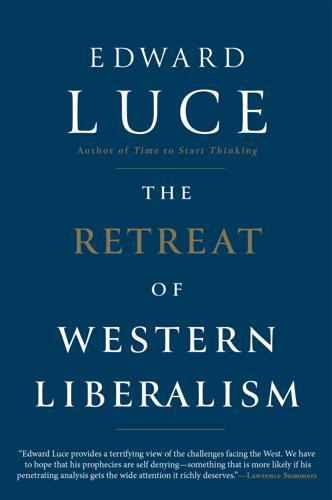
The Retreat of Western Liberalism
by
Edward Luce
Published 20 Apr 2017
But the growth vanished almost as quickly as it came. We are still awaiting the productivity gains we were assured would result from the digital economy. With the exception of most of the 1990s, productivity growth has never recaptured the rates it achieved in the post-war decades. ‘You can see the computer age everywhere but in the productivity statistics,’ said Robert Solow, the Nobel Prize-winning economist. Peter Thiel, the Silicon Valley billionaire, who has controversially backed Donald Trump, put it more vividly: ‘We wanted flying cars, instead we got 140 characters [Twitter].’ That may be about to change, with the acceleration of the robot revolution and the spread of artificial intelligence.
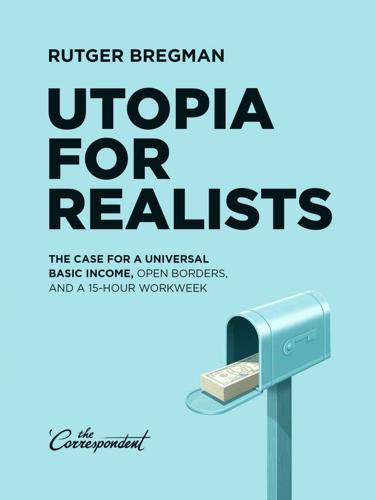
Utopia for Realists: The Case for a Universal Basic Income, Open Borders, and a 15-Hour Workweek
by
Rutger Bregman
Published 13 Sep 2014
Whereas in 1800, water power still supplied England with three times the amount of energy as steam, 70 years later English steam engines were generating the power equivalent of 40 million grown men.24 Machine power was replacing muscle power on a massive scale. Now, two centuries later, our brains are next. And it’s high time, too. “You can see the computer age everywhere but in the productivity statistics,” the economist Bob Solow said in 1987. Computers could already do some pretty neat things, but their economic impact was minimal. Like the steam engine, the computer needed time to, well, gather steam. Or compare it to electricity: All the major technological innovations happened in the 1870s, but it wasn’t until around 1920 that most factories actually switched to electric power.25 Fast forward to today, and chips are doing things that even ten years ago were still deemed impossible.

Hit Refresh: The Quest to Rediscover Microsoft's Soul and Imagine a Better Future for Everyone
by
Satya Nadella
,
Greg Shaw
and
Jill Tracie Nichols
Published 25 Sep 2017
In recent decades, the world has invested hundreds of billions of dollars in technology infrastructure—PCs, cell phones, tablets, printers, robots, smart devices of many kinds, and a vast networking system to link them all. The aim has been to increase productivity and efficiency. Yet what, exactly, do we have to show for it? Nobel Prize–winning economist Robert Solow once quipped, “You can see the computer age everywhere but in the productivity statistics.” However, from the mid-1990s to 2004, the PC Revolution did help to reignite once-stagnant productivity growth. But other than this too brief window, worldwide per capita GDP growth—a proxy for economic productivity—has been disappointing, just a little over 1 percent per year.
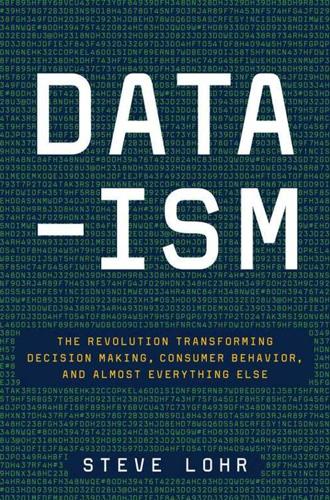
Data-Ism: The Revolution Transforming Decision Making, Consumer Behavior, and Almost Everything Else
by
Steve Lohr
Published 10 Mar 2015
Productivity gains—more wealth created per hour of labor—are the fuel of rising living standards, and a by-product of the efficiency that technology is supposed to generate. The conundrum raised the question of whether all of the investment in, and enthusiasm for, digital technology was justified. Robert Solow, a Nobel Prize–winning economist, tartly summed up the quandary in the late 1980s, when he wrote, “You can see the computer age everywhere but in the productivity statistics.” Solow’s critique became known as the productivity paradox. Brynjolfsson, a technology optimist, has two answers for the skeptics. First, he argues, the official statistics do not fully capture the benefits of digital innovation. And second, he says that in technology, revolutions take time.

The Rise and Fall of American Growth: The U.S. Standard of Living Since the Civil War (The Princeton Economic History of the Western World)
by
Robert J. Gordon
Published 12 Jan 2016
We can state this puzzle in two symmetric ways: Why was TFP growth so slow before 1920? Why was it so fast during the fifty years after 1920? The leading hypothesis is that of Paul David, who provided a now well-known analogy between the evolution of electric machinery and of the electronic computer.14 In 1987, Robert Solow quipped, “We can see the computer age everywhere but in the productivity statistics.”15 David responded, in effect: “Just wait”—suggesting that the previous example of the electric dynamo and other electric machinery implied that a long gestation period could intervene between a major invention and its payoff in productivity growth. David counted almost four decades between Thomas Edison’s opening in 1882 of the Pearl Street power plant in Lower Manhattan and the subsequent upsurge of productivity growth in the early 1920s associated with the electrification of manufacturing.
…
Mainframe computers created bank statements and phone bills in the 1960s and powered airline reservation systems in the 1970s. Personal computers, ATMs, and barcode scanning were among the innovations that created productivity growth in the 1980s. Reacting to the failure of these innovations to boost productivity growth, Robert Solow quipped, “You can see the computer age everywhere but in the productivity statistics.”18 Slow TFP growth in this period indicates that the benefits of the first round of computer applications partially masked an even more severe slowdown in productivity growth than would have occurred otherwise in the rest of the economy. The achievements of IR #3 can be divided into two major categories: communications and information technology.
…
Barber and beauty shops were joined by tanning and nail salons, but the ICT revolution had virtually no effect. A pedicure is a pedicure regardless of whether the customer is reading a magazine (as would occur a decade ago) or reading a book on a Kindle or surfing the web on a smartphone. This brings us back to Solow’s quip—that we can see the computer age everywhere but in the productivity statistics. The final answer to Solow’s computer paradox is that computers are not everywhere. We don’t eat computers or wear them or drive to work in them or let them cut our hair. We live in dwelling units that have appliances much like those of the 1950s, and we drive in motor vehicles that perform the same functions as in the 1950s, albeit with more convenience and safety.

Give People Money
by
Annie Lowrey
Published 10 Jul 2018
Yet, as the economist Chad Syverson has noted, for roughly a quarter century following its introduction, productivity growth was relatively slow. The same is true for the first information technology era, when computers started to become ubiquitous in businesses and homes. As the economist Robert Solow—hence the Solow residual—quipped in 1987, “You can see the computer age everywhere but in the productivity statistics.” In most cases, productivity did speed up once innovators invented complementary technologies and businesses had a long while to adjust—suggesting that the innovation gains and job losses of our new machine age might be just around the corner. If so, mass unemployment might be a result—and a UBI might be a necessary salve.

Cogs and Monsters: What Economics Is, and What It Should Be
by
Diane Coyle
Published 11 Oct 2021
Paul David (1990) provided one well-known historical account of these characteristics of a GPT, comparing the spread of computer technology in the 1980s to the electric dynamo in the early twentieth century, by way of explaining the ‘productivity paradox’ Robert Solow (1987, 36) had complained about: ‘You can see the computer age everywhere but in the productivity statistics.’ While the ultimate impacts were therefore substantial, the impact took a long time to show through in GDP and productivity figures. Although some economists question whether digital technologies are in the same league as these past GPTs in terms of their broad impact (Gordon 2016; Bloom et al. 2020), my view is that digital will be as transformational as earlier GPTs: eventually talking of the digital economy will sound as strange as talking of the electricity economy.

Prediction Machines: The Simple Economics of Artificial Intelligence
by
Ajay Agrawal
,
Joshua Gans
and
Avi Goldfarb
Published 16 Apr 2018
For some, the answer was easy: “Find where we do lots of calculations and substitute computers for humans; they’re better, faster, and cheaper.” For other businesses, it was less obvious. Nonetheless, they experimented. But the fruits of those experiments took time to materialize. Robert Solow, a Nobel laureate economist, lamented, “You can see the computer age everywhere but in the productivity statistics.”1 From this challenge came an interesting business movement called “reengineering.” In 1993, Michael Hammer and James Champy, in their book Reengineering the Corporation, argued that to use the new general-purpose technology—computers—businesses needed to step back from their processes and outline the objective they wanted to achieve.

Capitalism Without Capital: The Rise of the Intangible Economy
by
Jonathan Haskel
and
Stian Westlake
Published 7 Nov 2017
This was despite the advent of widely hyped new computer technologies that were supposedly going to transform business for the better. Robert Solow, who contributed more to the study of economic growth than most, famously pointed out in 1987 that the impact of the Computer Age could be seen everywhere but in the productivity statistics (Solow 1987). Goaded by these criticisms, statistical agencies, led by the US Bureau of Economic Analysis (BEA), began to examine their treatment of information and information technology more closely. They introduced two types of innovation. First, in the 1980s, in conjunction with IBM, the BEA started to produce indexes of computer prices that were quality adjusted.

The Entrepreneurial State: Debunking Public vs. Private Sector Myths
by
Mariana Mazzucato
Published 1 Jan 2011
When so many ‘life science’ companies are focusing on their stock price rather than on increasing their side of the R in R&D, simply subsidising their research will only worsen the problem rather than create the type of learning that Rodrik (2004) rightly calls for. 1 From now on ‘pharma’ will refer to pharmaceutical companies, and Big Pharma the top international pharma companies. Chapter 2 TECHNOLOGY, INNOVATION AND GROWTH You can see the computer age everywhere but in the productivity statistics. Solow (1987, 36) In a special report on the world economy, the Economist (2010a) stated: A smart innovation agenda, in short, would be quite different from the one that most rich governments seem to favor. It would be more about freeing markets and less about picking winners; more about creating the right conditions for bright ideas to emerge and less about promises like green jobs.
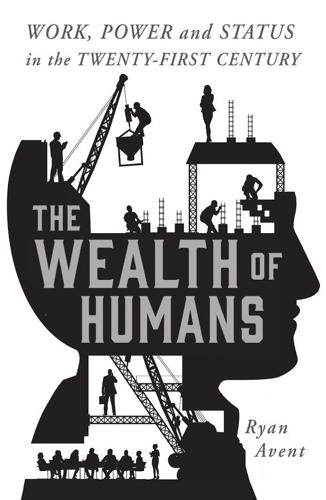
The Wealth of Humans: Work, Power, and Status in the Twenty-First Century
by
Ryan Avent
Published 20 Sep 2016
This slice of history played out during a period that economist Tyler Cowen, of George Mason University, has labelled the ‘Great Stagnation’.8 A half-century of extraordinary gains in computing power somehow did not return humanity to the days of dizzying economic and social change of the nineteenth century. In 1987 the Nobel Prize-winning economist Robert Solow mused, in a piece pooh-poohing the prospect of a looming technological transformation, that the evidence for the revolutionary power of computers simply wasn’t there. ‘You can see the computer age everywhere but in the productivity statistics’, he reckoned, and he had a point.9 Productivity perked up in the 1990s but wheezed out again in the 2000s. And that, some seemed to conclude, was all there was. In the 2000s Robert Gordon began posing a thought experiment to his audiences: would they, he wondered, prefer a world with all the available technology up to 2000, or one with all available technology up to the present day except for indoor plumbing?
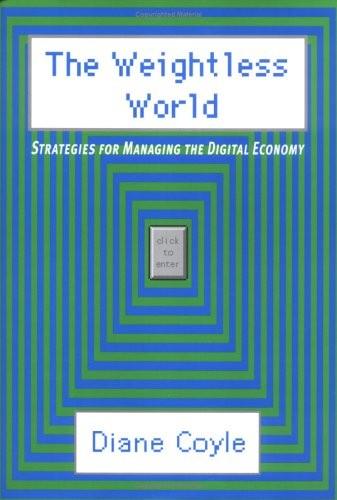
The Weightless World: Strategies for Managing the Digital Economy
by
Diane Coyle
Published 29 Oct 1998
Impatient shoppers spend minutes waiting for an under-trained sales clerk to figure out how to enter a purchase on the terminal, which will control the inventory, and for their credit card to be validated. Economists have dubbed this the productivity puzzle. Nobel Laureate Robert Solow famously joked: ‘You can see the computer age everywhere but in the productivity statistics’.7 So why have computers not generated extra growth in output? There are at least three answers: under-measurement of the output of industries using information technology; over-estimation of the importance of computers relative to all other types of capital equipment; and over-optimism about how quickly new technologies spread.
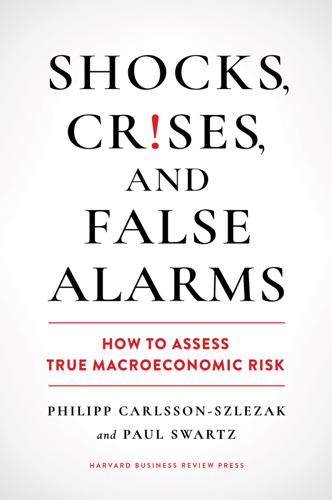
Shocks, Crises, and False Alarms: How to Assess True Macroeconomic Risk
by
Philipp Carlsson-Szlezak
and
Paul Swartz
Published 8 Jul 2024
Computers were hardly new in the 1990s, but it took time (and the internet was a catalyst) for their systemic impact to manifest. Figure 8.2 shows the enormous investment in ICT starting in the 1970s that nonetheless left productivity growth as a flat line—until it shifted up in the mid-1990s. In an often quoted quip, the economist Robert Solow in 1987 lamented that “you can see the computer age everywhere but in the productivity statistics.”8 Yes, what is today referred to as the Solow paradox was on full display in 1987. But 10 years later, the productivity surge had arrived. The magnitude of the productivity growth upshift in basis points (bps): 100. Relative to long-run trends in productivity growth—before and after—100 bps was a significant discontinuity.

The Uninhabitable Earth: Life After Warming
by
David Wallace-Wells
Published 19 Feb 2019
* * * — That technology might liberate us, collectively, from the strain of labor and material privation is a dream at least as old as John Maynard Keynes, who predicted his grandchildren would work only fifteen-hour weeks, and yet never ultimately fulfilled. In 1987, the year he won the Nobel Prize, economist Robert Solow famously commented, “You can see the computer age everywhere but in the productivity statistics.” This has been, even more so, the experience of most of those living in the developed world in the decades since—rapid technological change transforming nearly every aspect of everyday life, and yet yielding little or no tangible improvement in any conventional measures of economic well-being.

The Sirens' Call: How Attention Became the World's Most Endangered Resource
by
Chris Hayes
Published 28 Jan 2025
* * * — Understanding that attention is a finite and scarce resource helps to explain one of the great economic mysteries of the last fifty years, which is why we haven’t seen productivity grow more than it has. In the 1980s, in the early years of the information revolution, economist Robert Solow famously quipped, “You can see the computer age everywhere but in the productivity statistics.”[20] This proved a bit premature, because as the twentieth century ended, we did see a burst of productivity that clearly flowed from the mass adoption of networked computers. But both before that relatively short period and since, productivity growth has been underwhelming, and nowhere near the explosive rates of the middle of the twentieth century, particularly from 1920 to 1970.

The AI Economy: Work, Wealth and Welfare in the Robot Age
by
Roger Bootle
Published 4 Sep 2019
In particular, they don’t conform to the traditional pattern of technological advance that has underpinned economic progress over the last two centuries, namely the replacement of human labor by machines. You would have thought that computerization most definitely did conform to this paradigm. Yet the Nobel Prize-winning economist Robert Solow famously remarked in 1987: “you can see the computer age everywhere but in the productivity statistics.” 29 (Mind you, the pickup in US productivity in the late 1990s suggests that the gains from computers were real but, as with many other advances, delayed.) The American entrepreneur and venture capitalist, Peter Thiel, has put recent technological disappointment more pithily. He has said: “We wanted flying cars.
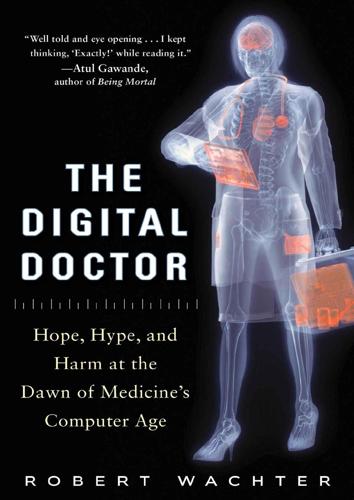
The Digital Doctor: Hope, Hype, and Harm at the Dawn of Medicine’s Computer Age
by
Robert Wachter
Published 7 Apr 2015
This phenomenon is known as the “productivity paradox” of information technology. 38 The name comes from the fact that Gross and Tecco decided to launch the organization while sitting in Harvard Business School’s Rock Hall. Chapter 26 The Productivity Paradox You can see the computer age everywhere but in the productivity statistics. —Nobel Prize–winning MIT economist Robert Solow, writing in 1987 Between the time David Blumenthal stepped down as national coordinator for health IT and became CEO of the Commonwealth Fund, he returned to Boston from 2011 to 2013 to manage the transition of Partners HealthCare from a homegrown electronic health record to the one made by Epic.
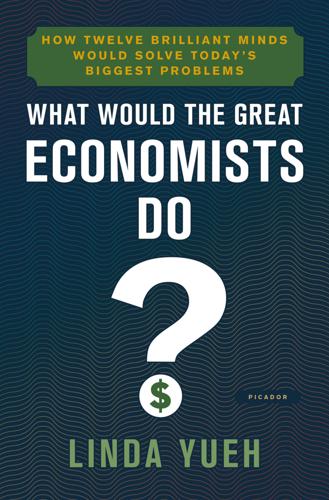
What Would the Great Economists Do?: How Twelve Brilliant Minds Would Solve Today's Biggest Problems
by
Linda Yueh
Published 4 Jun 2018
For instance, the strong period of growth in the 1950s and 60s is associated with post-war technological advances, such as widespread air travel and industrial robots. Curiously, recent technological improvements, centred on computing, information and communication technologies (ICT) and the internet, do not seem to have raised productivity across the economy. Solow’s 1987 observation that ‘You can see the computer age everywhere but in the productivity statistics’ is known as the Solow paradox.6 He revisited this question decades later, but concluded that we still do not know, as the role of computing is still evolving. Solow points out that since our lives and work have been transformed by computers, this technology should have improved our productivity.
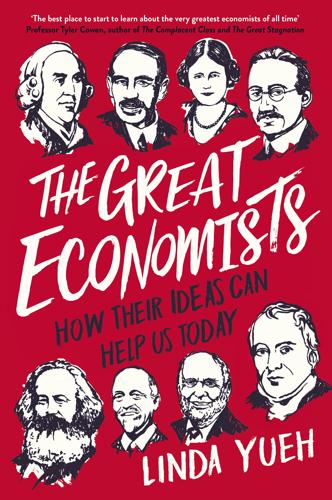
The Great Economists: How Their Ideas Can Help Us Today
by
Linda Yueh
Published 15 Mar 2018
For instance, the strong period of growth in the 1950s and 60s is associated with post-war technological advances, such as widespread air travel and industrial robots. Curiously, recent technological improvements, centred on computing, information and communication technologies (ICT) and the internet, do not seem to have raised productivity across the economy. Solow’s 1987 observation that ‘You can see the computer age everywhere but in the productivity statistics’ is known as the Solow paradox.6 He revisited this question decades later, but concluded that we still do not know, as the role of computing is still evolving. Solow points out that since our lives and work have been transformed by computers, this technology should have improved our productivity.

Machine, Platform, Crowd: Harnessing Our Digital Future
by
Andrew McAfee
and
Erik Brynjolfsson
Published 26 Jun 2017
Phase one of the second machine age describes a time when digital technologies demonstrably had an impact on the business world by taking over large amounts of routine work—tasks like processing payroll, welding car body parts together, and sending invoices to customers. In July of 1987 the MIT economist Robert Solow, who later that year would win a Nobel prize for his work on the sources of economic growth, wrote, “You can see the computer age everywhere but in the productivity statistics.” By the mid-1990s, that was no longer true; productivity started to grow much faster, and a large amount of research (some of it conducted by Erik‡‡ and his colleagues) revealed that computers and other digital technologies were a main reason why. So, we can date the start of phase one of the second machine age to the middle of the 1990s.
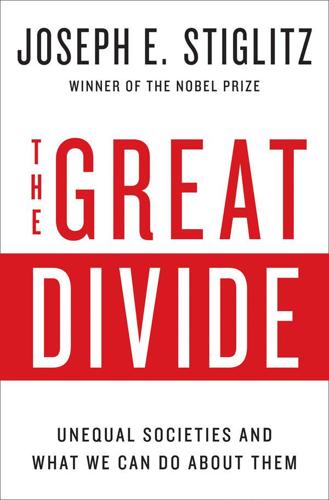
The Great Divide: Unequal Societies and What We Can Do About Them
by
Joseph E. Stiglitz
Published 15 Mar 2015
But there is a puzzle: it is difficult to detect the benefits of this innovation in GDP statistics. What is happening today is analogous to developments a few decades ago, early in the era of personal computers. In 1987, the economist Robert Solow—awarded the Nobel Prize for his pioneering work on growth—lamented, “You can see the computer age everywhere but in the productivity statistics.” There are several possible explanations for this. Perhaps GDP does not really capture the improvements in living standards that computer-age innovation is engendering. Or perhaps this innovation is less significant than its enthusiasts believe. As it turns out, there is some truth in both perspectives.

When Einstein Walked With Gödel: Excursions to the Edge of Thought
by
Jim Holt
Published 14 May 2018
In this they have proved something of a disappointment. In the early 1970s, American businesses began to invest heavily in computer hardware and software, but for decades this enormous investment seemed to pay no dividends. As the economist Robert Solow put it in 1987, “You can see the computer age everywhere but in the productivity statistics.” Perhaps too much time was wasted in training employees to use computers; perhaps the sorts of activities that computers make more efficient, like word processing, don’t really add all that much to productivity; perhaps information becomes less valuable when it’s more widely available.

The Rational Optimist: How Prosperity Evolves
by
Matt Ridley
Published 17 May 2010
Consider the case of discount retailing. The burst of increasing productivity that countries like America and Britain rather unexpectedly experienced in the 1990s at first puzzled many economists. They wanted to credit computers, but as the economist Robert Solow had quipped in 1987, ‘you can see the computer everywhere but in the productivity statistics’, and those of us who experienced how easy it was to waste time using a computer in those days agreed. A study by McKinsey concluded that the 1990s surge in the United States was caused by (drum roll of excitement) logistical changes in business (groan of disappointment), especially in the retail business and especially in just one firm – Wal-Mart.

Profiting Without Producing: How Finance Exploits Us All
by
Costas Lapavitsas
Published 14 Aug 2013
Looking more closely at figure 6, from the middle of the 1970s to the middle of the 1990s, productivity growth was broadly flat or declining, including in the US, the leading country in introducing the new technologies of the era.14 Robert Solow observed that ‘You can see the computer age everywhere but in the productivity statistics’, and his quip became the ‘Solow Paradox’ characteristic of the new era.15 After 1995, however, significant technological improvements in the microprocessor industry and faster productivity growth in general seemed to materialize for the US economy. A debate took place within mainstream economics in the second half of the 1990s regarding the validity of the upsurge.

The Technology Trap: Capital, Labor, and Power in the Age of Automation
by
Carl Benedikt Frey
Published 17 Jun 2019
As risk-adverse farmers were reluctant to adopt expensive tractors, businesses deemed the cost of computers too high to bear. And they were right in thinking so. When computerization finally took off, unforeseen glitches emerged. In 1987, when Robert Solow puzzled that “we can see the computer age everywhere but in the productivity statistics,” an article in the Wall Street Journal reported: “Companies are automating in smaller doses now, a strategy that allows bugs to be worked out before huge investments are made.”66 As the director of engineering at AT&T explained, “If you make 30 million boxes of Wheaties a year, you can use automation without many problems, but if you’re in a competitive market where the product is changing and its life cycle is short, you better be damned careful.”67 The performance of the technology is not all that matters.

The Price of Time: The Real Story of Interest
by
Edward Chancellor
Published 15 Aug 2022
The Northwestern economist lamented that the digital revolution ‘provided new opportunities for consumption on the job and in leisure hours rather than a continuation of the historical tradition of replacing human labor with machines’.18 Gordon’s concerns recall a famous comment made by MIT economist Bob Solow in 1987, that ‘you can see the computer age everywhere but in the productivity statistics.’ The Nobel laureate Solow spoke too soon. Not long afterwards US productivity growth picked up, assisted presumably by advances in information technology. As Gordon’s book The Rise and Fall of American Growth went to press in early 2016 (its publication facilitated by digital technologies), the internet continued to disrupt countless industries while the media fanned fears of an impending ‘second machine age’, in which robots replace human workers.

Power and Progress: Our Thousand-Year Struggle Over Technology and Prosperity
by
Daron Acemoglu
and
Simon Johnson
Published 15 May 2023
Moreover, much of the growth in both patenting and research spending is driven by new patents in electronics, communication, and software, the fields that were supposed to propel us forward. But look a little closer, and the fruits of the digital revolution are much harder to see. In 1987, Nobel Prize winner Robert Solow wrote: “You can see the computer age everywhere but in the productivity statistics,” pointing out the small gains from investments in digital technologies. Those more optimistic about computers told Solow that he had to be patient; productivity growth would soon be upon us. More than thirty-five years have passed, and we are still waiting. In fact, the US and most other Western economies have had some of the most unimpressive decades in terms of productivity growth since the beginning of the Industrial Revolution.
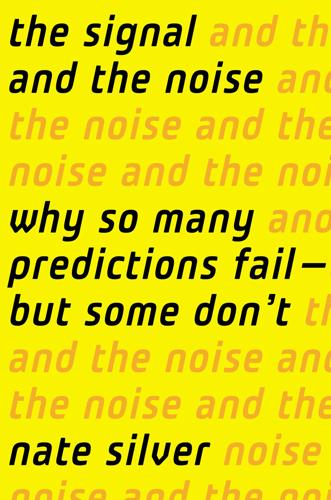
The Signal and the Noise: Why So Many Predictions Fail-But Some Don't
by
Nate Silver
Published 31 Aug 2012
In 1971, for instance, it was claimed that we would be able to predict earthquakes within a decade,29 a problem that we are no closer to solving forty years later. Instead, the computer boom of the 1970s and 1980s produced a temporary decline in economic and scientific productivity. Economists termed this the productivity paradox. “You can see the computer age everywhere but in the productivity statistics,” wrote the economist Robert Solow in 1987.30 The United States experienced four distinct recessions between 1969 and 1982.31 The late 1980s were a stronger period for our economy, but less so for countries elsewhere in the world. Scientific progress is harder to measure than economic progress.32 But one mark of it is the number of patents produced, especially relative to the investment in research and development.

The Age of Turbulence: Adventures in a New World (Hardback) - Common
by
Alan Greenspan
Published 14 Jun 2007
It takes time to apply new ideas and often decades before those ideas show up in productivity levels. Paul David, a professor of economic history at Stanford, wrote a seminal article in 1989 that addressed the puzzle of why, in the famous words of Nobel laureate economist and then-MIT professor Robert Solow, computers were "everywhere but in the productivity statistics." It was David's article that heightened my interest in long-term productivity trends. He pointed out that it often took decades for a new invention to be diffused sufficiently widely to affect the levels of productivity. As an *Ten years later, in 1975, Moore revisited his analysis and reported, "I had no idea this was going to be an accurate prediction, b u t amazingly enough instead o f t e n doublingfs], we got nine over t h e ten years."

The Meritocracy Trap: How America's Foundational Myth Feeds Inequality, Dismantles the Middle Class, and Devours the Elite
by
Daniel Markovits
Published 14 Sep 2019
As the economist Robert Solow, whose work on economic growth won him the Nobel Prize, once wryly admitted, it is “somewhat embarrass[ing] . . . that what everyone feels to have been a technological revolution, a drastic change in our productive lives, has been accompanied everywhere . . . by a slowing-down of productivity growth, not by a step up. We can see the computer age everywhere but in the productivity statistics.” Robert Solow, “We’d Better Watch Out,” New York Times, July 12, 1987 (reviewing Stephen S. Cohen and John Zysman, Manufacturing Matters: The Myth of the Post-Industrial Economy). Conclusion: What Should We Do? “a thousand years of successful German history”: The phrase comes from Alexander Gauland, the head of the populist Alternativ für Deutschland.